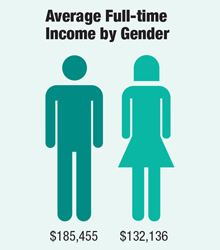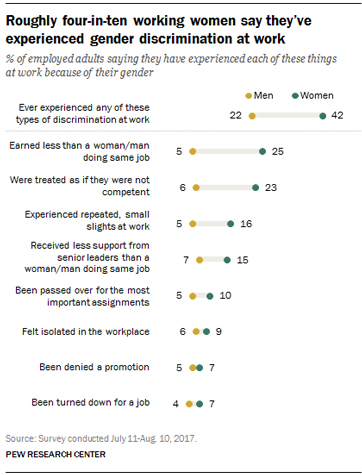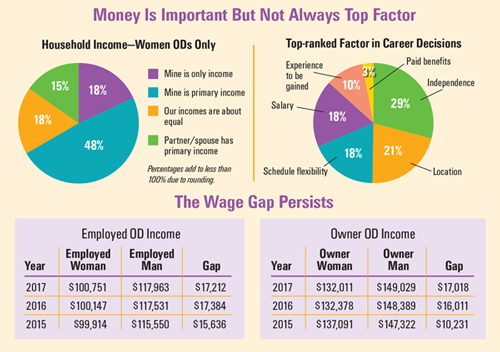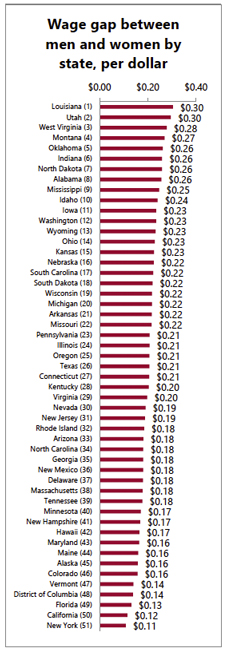 Right after Mary Tyler Moore died in 2017, I wrote a column about what a role model her character, Mary Richards, was for women in the 1970s business world. Mary’s weekly encounters with her gruff but lovable boss Lou Grant, were emblematic of what a lot of women were experiencing on the job some 45 years ago, especially when it came to equal treatment and equal pay. In one episode, Mary asks why her predecessor earned more money than she does and Lou replies, “Because he was a man.” It was meant to be funny and rang true at the time, but sad to say, times are not changing fast enough when it comes to salary equity between men and women.
Right after Mary Tyler Moore died in 2017, I wrote a column about what a role model her character, Mary Richards, was for women in the 1970s business world. Mary’s weekly encounters with her gruff but lovable boss Lou Grant, were emblematic of what a lot of women were experiencing on the job some 45 years ago, especially when it came to equal treatment and equal pay. In one episode, Mary asks why her predecessor earned more money than she does and Lou replies, “Because he was a man.” It was meant to be funny and rang true at the time, but sad to say, times are not changing fast enough when it comes to salary equity between men and women.
 By the Numbers
By the Numbers
Here’s a sobering fact from the Institute for Women’s Policy Research: full-time working women in the U.S. earned only 80.5 cents for every one dollar earned by men. And women, on average, earn less than men in nearly every single occupation, including optometry, but more on that later.
Nationally, the median annual pay for a woman who holds a full-time, year-round job is $41,554 while the median annual pay for a man who holds a full-time, year-round job is $51,640, according to the National Partnership for Women and Families. Overall, for women in the U.S., this translates to an annual gender wage gap of $10,086.
The wage gap also varies by state, congressional district, and it affects nearly every part of the U.S. In Louisiana and Utah for example, women are paid 70 cents for every dollar paid to men (a gap of 30 cents for every dollar), while in New York, women are paid 89 cents for every dollar paid to men (a gap of 11 cents).
 According to the National Partnership for Women and Families, on average, women employed full time in the U.S. lose a combined total of nearly $900 billion every year due to the wage gap. “These lost wages mean women and their families have less money to support themselves, save and invest for the future, and spend on goods and services. Families, businesses and the economy all suffer as a result,” the non-profit organization said.
According to the National Partnership for Women and Families, on average, women employed full time in the U.S. lose a combined total of nearly $900 billion every year due to the wage gap. “These lost wages mean women and their families have less money to support themselves, save and invest for the future, and spend on goods and services. Families, businesses and the economy all suffer as a result,” the non-profit organization said.
About four-in-ten working women (42 percent) in the U.S. say they have faced discrimination on the job because of their gender, according to a 2017 analysis of Pew Research Center survey data. “They report a broad array of personal experiences, ranging from earning less than male counterparts for doing the same job to being passed over for important assignments.”
The survey found that, “among employed adults, women are about twice as likely as men (42 percent versus 22 percent) to say they have experienced at least one of eight specific forms of gender discrimination at work” ranging from “being treated as if they were not competent” to “being denied a promotion.”
The Pew survey showed, that one of the biggest gender gaps is in the area of income: one-in-four working women (25 percent) say they have earned less than a man who was doing the same job; one-in-twenty working men (5 percent) say they have earned less than a female peer.
Where Does Optical Fit in the Picture?
The gender gap isn’t new to optometry, or any profession for that matter. According to a Review of Optometry survey, 2016 was a big step toward equality, with the disparity between men and women shrinking from 68 percent to 37 percent in their annual survey. If 2016 represented a step in the right direction, 2017 will go down as a step backward. Results show that men out-earned women by 40 percent in 2017, a 3 percent bigger gap than 2016.
One bright spot in last year’s gender-based statistics was the fact that the majority of the disparity came from those with more than 30 years in the field; women with less than 10 years of experience, who accounted for a much larger percentage of respondents, had pulled to within three percentage points of equal pay.
In 2017, at an average income of $204,903, men with more than 30 years of experience under their belts earned 10 percent more than women with the same experience, who earned an average of $186,265. This actually demonstrates a closing of the gap, as this group’s disparity was 33 percent in 2016.

 According to a Women In Optometry poll, 48 percent of women ODs who responded in 2017 said that theirs was the primary income for their household. Eighteen percent said that theirs was the only income for the household. Only 15 percent of women ODs said that their partner or spouse earned more. And according to Jobson Optical Research, the wage gap for employed ODs and owner ODs persisted, with women in both categories earning a little over $17,000 less than their male counterparts in the industry.
According to a Women In Optometry poll, 48 percent of women ODs who responded in 2017 said that theirs was the primary income for their household. Eighteen percent said that theirs was the only income for the household. Only 15 percent of women ODs said that their partner or spouse earned more. And according to Jobson Optical Research, the wage gap for employed ODs and owner ODs persisted, with women in both categories earning a little over $17,000 less than their male counterparts in the industry.
Where Do We Go From Here?
Gender equality is now a top priority for 78 percent of companies yet less than half of employees feel companies aren’t doing enough, according to Benevity, a company specializing in online workplace giving, matching, volunteering and integrated grant management solutions. While the pay gap (for equal work) is closing, the promotion gap isn’t, leaving women making 76 cents on the dollar compared to men. And the gender gap isn’t expected to close for another 170 years. Take a look at these and other surprising facts in this infographic and you’ll see some clear solutions start to emerge that can help companies move the needle faster toward pay equality.
Solutions to the Pay Gap
Some states are taking matters into their own hands when it comes to closing the gender pay gap. According to a recent New York Times article Boston’s mayor, Martin Walsh, is committed to bringing equal pay to the city’s work force.
According to the article, “The Boston Women’s Workforce Council teams up with the area’s companies and institutions, including major ones like Morgan Stanley, Zipcar and the Massachusetts Institute of Technology, to help them figure out ways to advance women, which they share with one another in quarterly best-practice meetings.
“The city has also trained over 7,000 women in salary negotiation, with a goal of training an additional 78,000 by 2021. A more immediate deadline: The Massachusetts Equal Pay Act, passed by the legislature in 2016, goes into effect in July.
“The law states that ‘no employer shall discriminate in any way on the basis of gender in the payment of wages, or pay any person in its employ a salary or wage rate less than the rates paid to its employees of a different gender for comparable work.’ In addition, it prohibits employers from disciplining workers for discussing their salaries with colleagues or asking job applicants for their salary history.”
The Times points out that Massachusetts is not the first state to pass a pay equity law. “In recent years, many states have been working to pass or strengthen their laws, including North Dakota, Illinois and Oregon. But none of those states has gone quite as far as Massachusetts.”
 Courtesy @thecrownnetflix
Courtesy @thecrownnetflix
If you haven’t seen the series you should start streaming—in addition to being a great history lesson about the British monarch, Foy’s portrayal of Elizabeth’s early days as Queen is not to be missed.
Read More About It
Equal Pay Day
Why the Gender Pay Gap Still Exists 55 Years After the Equal Pay Act Was Signed
The Paycheck Fairness Act
Can We Expect Passage of the Paycheck Fairness Act in 2018?
The Wage Gap, Circa 1972
Mary Tyler Moore Tackled the Wage Gap on Her Show